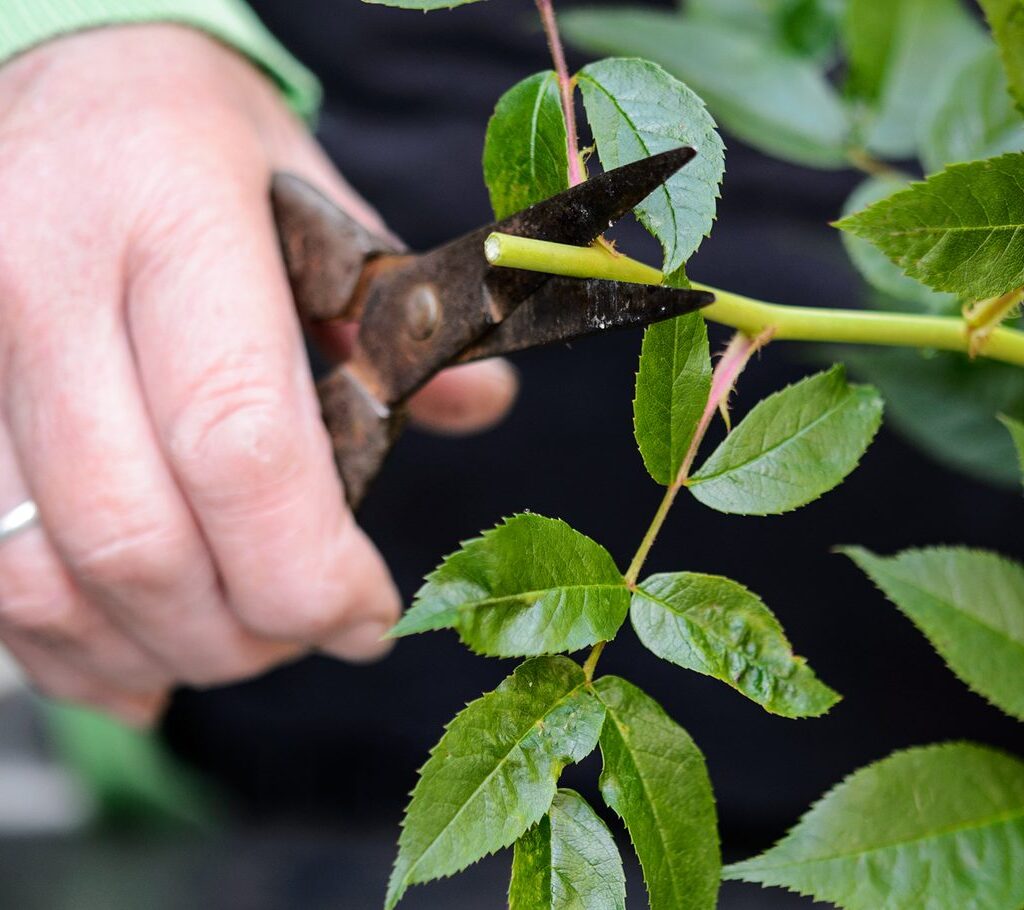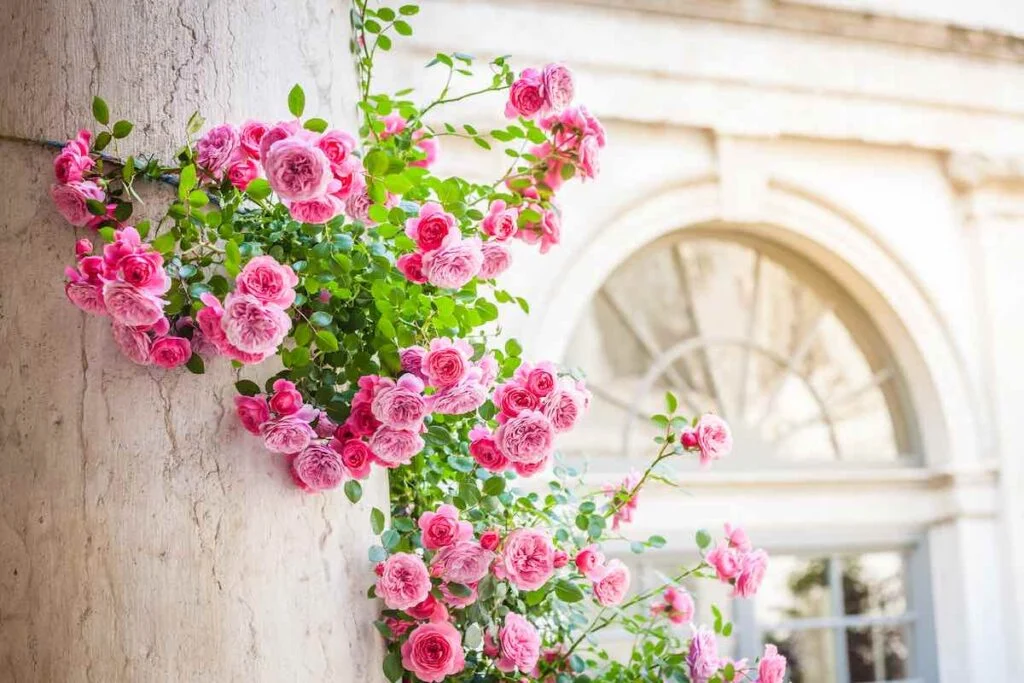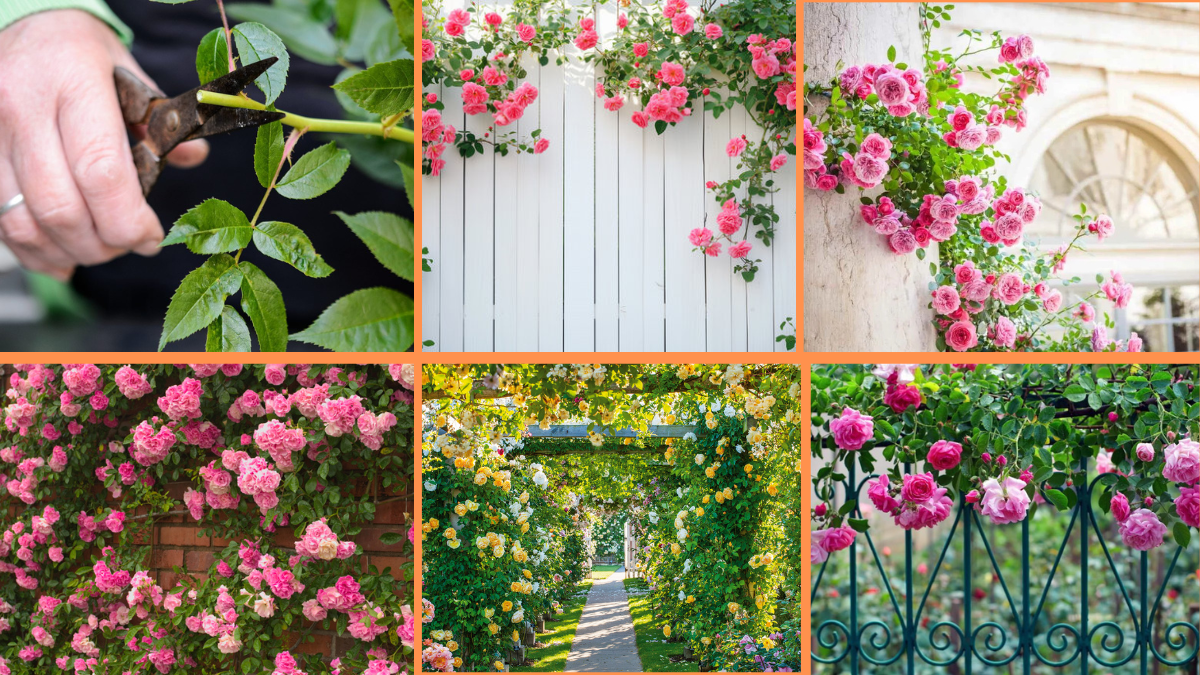Few plants offer the romantic charm and dramatic beauty of climbing roses. Their sprawling canes, adorned with lush foliage and cascading blooms, can turn any garden wall, arch, fence, or trellis into a breathtaking feature. But to truly unlock their full potential, climbing roses require a bit of thoughtful training.
Unlike other shrubs, climbing roses don’t naturally climb like vines. Instead, their long, flexible canes need to be guided and secured to structures to achieve the beautiful, arching displays you see in garden magazines. In this guide, we’ll walk you through 10 practical, effective tips to train climbing roses for a stunning garden showcase.

Why Train Climbing Roses?
Before we dive into the how-to, it’s helpful to understand why training climbing roses matters:
- Encourages more blooms by positioning canes horizontally, stimulating lateral flowering branches.
- Prevents tangled growth and ensures even coverage over arches, walls, fences, or trellises.
- Improves plant health by allowing better air circulation and light penetration.
- Adds structure and visual interest to your garden design.
Now — let’s get started.

1. Choose the Right Climbing Rose Variety
Training success starts with selecting a climbing rose suited to your climate and garden space. There are two main types:
- Rambling Roses: Vigorous growers with long, flexible canes and smaller, clustered flowers. Perfect for covering large spaces like pergolas and fences.
- Climbing Roses: Slower-growing with larger, individual blooms on stiff, upright canes. Ideal for trellises, walls, and arbors.
Tip: Always check the mature height and spread of the rose variety before planting to match your available space and support structure.

2. Install a Sturdy Support Structure Early
Climbing roses need a strong framework to support their weight as they grow and bloom.
Popular options include:
- Trellises
- Arches and pergolas
- Fences or lattice panels
- Garden walls with wire grids
Install your chosen support before or at the time of planting so you can easily train new growth without damaging established canes.
Tip: Ensure the support is securely anchored and made of weather-resistant material like treated wood, metal, or durable plastic.

3. Plant with Training in Mind
When planting your climbing rose, position it about 12 inches away from the support structure. This spacing encourages airflow around the base, reducing disease risk.
Angle the plant slightly toward the support so the canes naturally lean in that direction. Backfill with nutrient-rich soil and water thoroughly.

4. Start Training When Canes Are Young and Flexible
The best time to begin training is when the canes are young, green, and pliable. Older, woody canes can snap if bent too far.
Begin gently guiding new shoots toward the support, spacing them out to prevent overcrowding. Training early makes it easier to shape the plant and avoid damage.

5. Secure Canes with Soft Garden Ties
Use soft, flexible ties like garden twine, plant clips, or stretchable fabric strips to attach canes to the support. Avoid tight, rigid materials like wire, which can cut into the stems as they grow.
Tie in a loose figure-eight pattern: one loop around the support, one around the cane, leaving space for movement and growth.
Tip: Check and adjust ties periodically as the plant grows and thickens.
6. Train Canes Horizontally for More Flowers
Here’s a crucial training secret: roses bloom more along lateral shoots (side branches) than on vertical stems.
To encourage abundant flowering:
- Gently bend and secure main canes horizontally or at a 45° angle along the support.
- Leave space between canes to avoid shading and crowding.
- New shoots will sprout vertically from these canes, producing clusters of blooms.
Pro tip: This method transforms a few tall, upright stems into a wide wall of flowers.
7. Regularly Prune and Remove Dead Wood
Efficient training involves consistent pruning to:
- Remove dead, damaged, or diseased wood.
- Control overgrown canes.
- Shape the plant and encourage new flowering stems.
When to prune:
- Rambling roses: After flowering, in mid to late summer.
- Climbing roses: In late winter or early spring before new growth.
Pruning tips:
- Cut at a 45° angle just above a healthy outward-facing bud.
- Keep the strongest, best-positioned canes for training.
- Remove weak, spindly, or crowded stems.
8. Encourage New Growth from the Base
Healthy, productive climbing roses should regularly send up fresh canes from the base.
To encourage this:
- Prune out one or two older, woody canes each year after flowering.
- Avoid cutting all growth from the base at once.
- Keep soil fertile and well-watered, especially during the growing season.
New basal canes replace older ones, ensuring long-term vigor and consistent flowering.
9. Feed and Water Generously
Training climbing roses to cover a large area demands strong, healthy plants. Support their growth with regular feeding and watering:
- Feed with a balanced rose fertilizer (or an organic option like fish emulsion or compost tea) in early spring, after the first flush of flowers, and again in mid-summer.
- Water deeply at least once a week in dry periods, aiming for consistent soil moisture but avoiding waterlogged conditions.
Tip: Apply a thick layer of organic mulch around the base to retain moisture and suppress weeds.
10. Be Patient and Persistent
Training climbing roses is a gradual process that takes a few seasons for the plant to mature and cover its support fully.
- Regularly check ties, adjust canes, and guide new growth where needed.
- Resist the urge to over-prune in the first year — allow the plant to establish a solid framework.
- Celebrate small wins as each season brings more growth, flowers, and structure.
Pro tip: Keep a garden journal to track your plant’s progress, pruning dates, and flowering times.
Final Thoughts
Climbing roses bring timeless beauty and elegance to any outdoor space, from cottage-style gardens to modern landscapes. With a sturdy support, careful training, and regular care, you can create a spectacular display of cascading blooms and lush greenery.
By following these 10 practical, effective training tips, you’ll encourage fuller flowering, healthier growth, and a more organized, visually stunning plant. Whether you dream of a rose-covered arbor, a flowering fence, or a trellis ablaze with color, the reward is well worth the patience and care.





